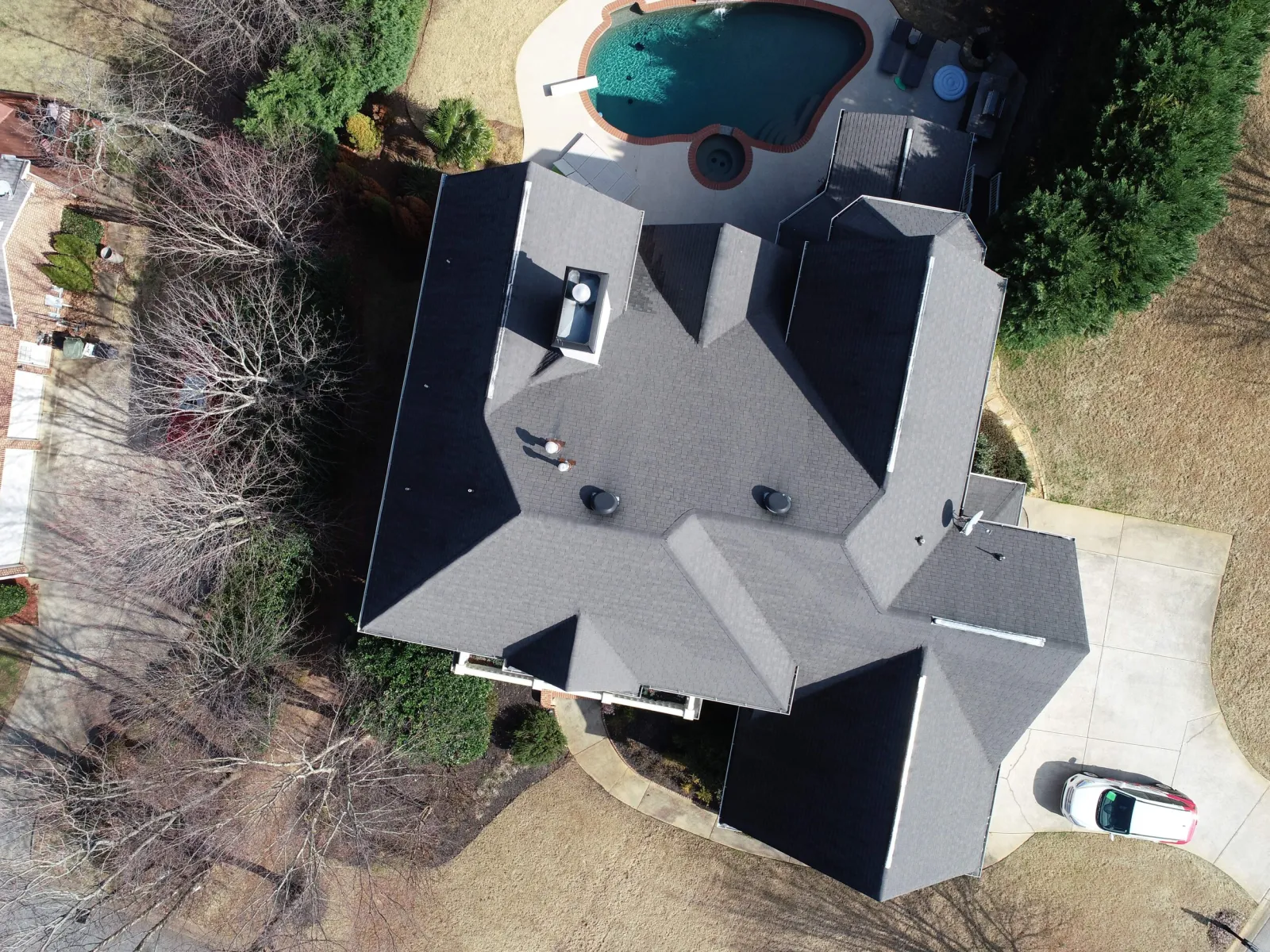When it comes to fixing your roof, there is never a short, sweet, and simple decision to make. When problems arise, you have to ask yourself what your roof needs. Solutions can vary from a repair, a partial replacement, to a full roof replacement. Fortunately for you, these aren't decisions you have to make on your own-- in fact, it's recommended that you don't make these decisions on your own.
The first thing to do when any problems arise is to call a professional to inspect your roof. There are some signs you can pick up on yourself, but the roof inspector can help guide you to the right decision.

Early Signs of Damage
You don't have to wait until your roof is leaking to know there's a problem. Some silent signs that your roof is beginning to fail include:
- Dark spots on your ceiling
- Broken or misshapen shingles
- Cracked caulk
- Rust spots on the gutter
- Warping or discoloration around the chimney and pipes
The truth is that your roof gives you many clues when it's in poor condition. A great way to avoid big surprises is by having your roof routinely inspected by a professional. In addition to that, your home insurance is less likely to help pay for a new roof if you neglect basic maintenance. Instead of stressing out about fixing your roof later, take the time to inspect it today.
Repairing Your Roof
Not all damage to your roof means you need to replace the whole thing-- sometimes a simple repair will do. For example, if heavy winds pull shingles off of your roof, you don't need to spend thousands of dollars on a new roof when all you need is a repair. The most important thing to remember here is that once you notice the shingles are missing, you need to replace them immediately. If you don't, you run the risk of damaging your roof further.
Before repairing your roof, ask yourself this: Do you plan on selling your home in a few years? If so, you'll want to make sure to have the roofing company install shingles that are a close match to the existing ones. If not, the repair might stand out and deter potential buyers.
Partial Roof Replacement
It is an option for you to replace only one side of your roof. If the damage is too great for a repair but your roof is still relatively new, having a partial roof replacement is an option to consider. Replacing one side of the roof makes it less noticeable if the shingles aren't an exact match, and it's easier on your wallet in the short term.
Total Roof Replacement
The only quick decision to make about your roof is this: if it's over 20 years old, it could be time to replace it. While you used to be able to install shingles on top of shingles, this is no longer acceptable according to code and manufacturer specifications. Shingles don't weigh much by themselves, but when they're all installed on your roof, it puts more weight and stress on your house than you might think. Shingles now have a fiberglass mat that makes the shingles last longer; however, it also means that they need to breathe.
Also, having the old shingles removed before installing the new roof also allows you to inspect the roof deck for any damage like mold or dry rot. Being able to see any existing but hidden problems will allow the crew to address and fix the problem before it becomes more severe.
Your Roof is An Investment
The best way to look at your roof is as a protective investment over your home and not as an inconvenient price tag. Regular maintenance and inspection of your roof will give you the most out of your money and a peace of mind. Don't delay calling for an inspection when you notice something is off about your roof. Diligence can and will save you lots of money and headaches down the road.
